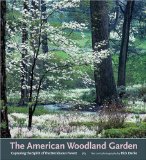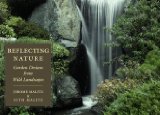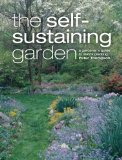| Build that wild feel into your woods. |
| ABOUT US START IDEAS DO LESS USEFUL PLANTS PROJECTS VIEWS RESOURCES TOPICS |
|
|
|||
So you're going to create or restore a woodland, and you want it to look natural. How do you design that "wild" feel into a woodland garden? Once you've figured out what trees to plant, your next concern may be where exactly to plant them in relation to each other, how many of each tree you will need, and so forth. Then there are all the other plants that will accompany your trees. Which to use, and where to put them? Though quite a few books have been published about naturalistic gardening and wildlife gardening, they provide advice that may lead you to make a garden with trees in it rather than a planting that resembles a natural place. Natural areas have a different feel and look than gardens. Wandering through nearby forests is, of course, an ideal way to get a feel for how they look. If you can find a real place after which to pattern your landscape, you will probably learn more by observing that place than you could from a number of books. However, if you would welcome advice from experts on observing natural woodsy areas, I'd highly recommend a few books. Rick Darke, a first-rate nature photographer, published his landmark book The American Woodland Garden: Capturing the Spirit of the Deciduous Forest in 2002. If you plan to create a deciduous forest (maples, oaks, etc), I strongly urge you to consider his book as a reference. Not only is it full of enchanting color photos, but it also includes extremely useful information and advice. Darke calls upon his decades of experience photographing both natural wooded areas and gardens to distill some essential characteristics one could use to design a naturalistic woodland. Different sections of the book cover how to observe nature (qualities of light, color, change, architecture, and diversity), how to design a natural woodland (views, natural forms of plants, lighting and layering, fitting paths and human structures into the woodland), considerations for planting and maintenance, and profiles of individual species. Treatments of individual species show visually how they fit into a woodland community and what they look like through the seasons. The book is packed with Darke's delicious color photographs illustrating characteristics of the deciduous woods and showing how to replicate these effects in a planted area. Darke does an excellent job of inspiring readers to appreciate the unique qualities of a woodland, an appreciation that will help in designing woods with those same qualities. Worth every penny if you really want to get a feel for what makes woodlands so beautiful and duplicate that beauty.
Father and son Jerome and Seth Malitz, in their book Reflecting Nature: Garden Designs from Wild Landscapes The Malitzes' book is useful for those who want to build a natural-looking landscape of nearly any type—rockland, woodland, meadow, wetland—and for those who are interested in using nature to jumpstart their creativity. The Malitzes are talented nature photographers, and their juxtapositions of natural and human-built landscapes provoke plenty of contemplation.
For specific descriptions of naturalistic gardens and how they were designed, Peter Thompson's The Self-Sustaining Garden: A Gardener's Guide to Matrix Planting Then he tackles different types of ecosystems individually—grasslands, wetlands, shrublands, and treed landscapes—talking first about the general look and feel of each type of community, then describing several example gardens that were created or reshaped to suggest that community. His descriptions include plant recommendations. (Most of the gardens are located in Britain or New Zealand.) These authors have a load of knowledge to impart, but as its designer and/or manager, you also bring a crucial knowledge to your woodland. You are responsible for conjuring up its spirit—the way you want it to look and feel—and for making a place in which that spirit can come to life. |
Other LessLawn articles about woodlands:
The American Woodland Garden: Capturing the Spirit of the Deciduous Forest by Rick Darke  Reflecting Nature: Garden Designs from Wild Landscapes  The Self-Sustaining Garden: A Gardener's Guide to Matrix Planting  Consult LessLawn's annotated reading list of garden design books! |
||
|
Thanks for visiting http://www.LessLawn.com! All site contents © 2001-2013 Evelyn J. Hadden, except where noted. All rights reserved. |